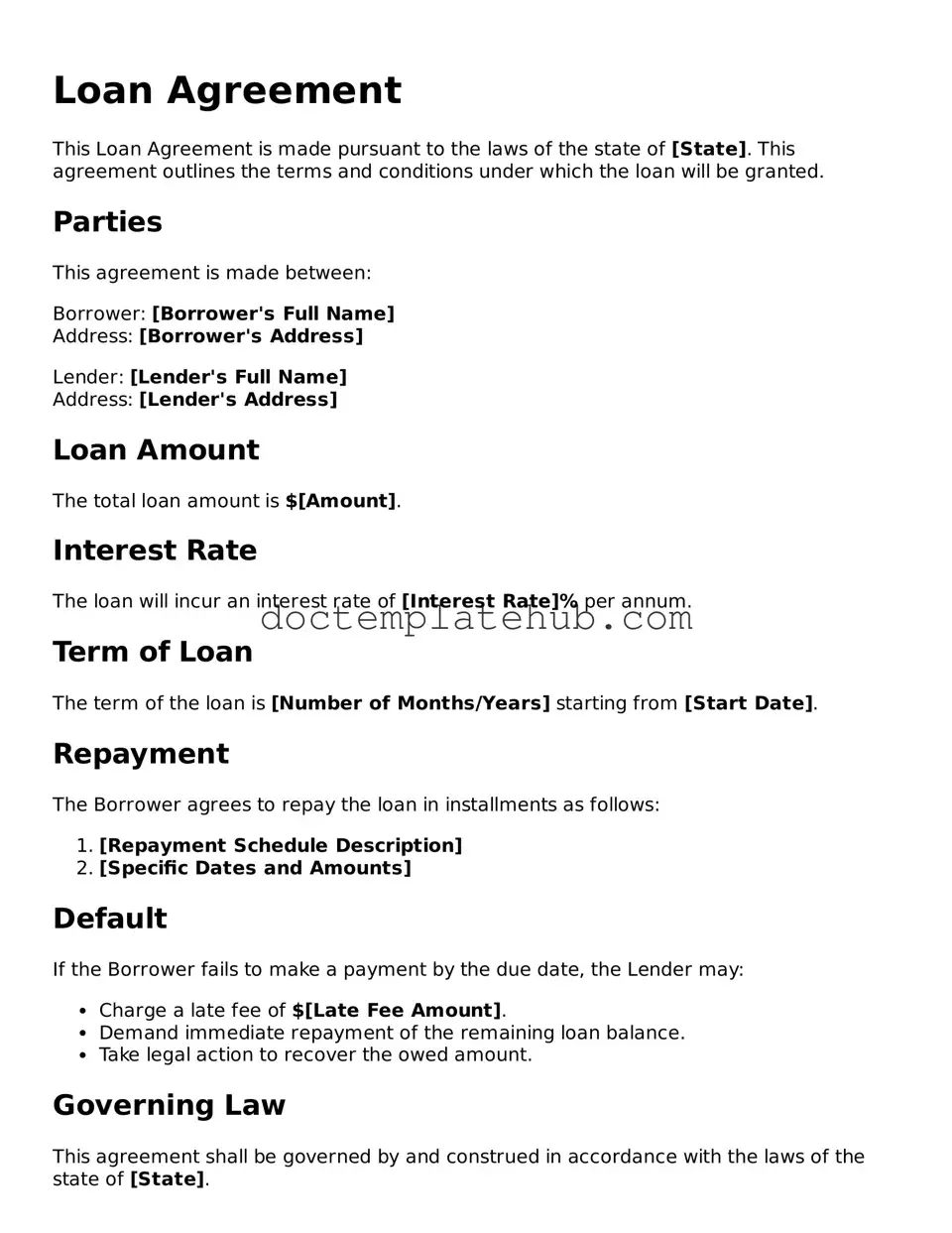What is a Loan Agreement form?
A Loan Agreement form is a legal document that outlines the terms and conditions of a loan between a lender and a borrower. It specifies the amount borrowed, the interest rate, repayment schedule, and any collateral involved. This document serves to protect both parties by clearly defining their rights and obligations.
Who needs a Loan Agreement?
Anyone who is lending or borrowing money should consider using a Loan Agreement. This includes individuals, businesses, and organizations. Whether it's a personal loan between friends or a business loan, having a formal agreement helps prevent misunderstandings and disputes later on.
What are the key components of a Loan Agreement?
A comprehensive Loan Agreement typically includes the following elements: the names and addresses of the lender and borrower, the loan amount, interest rate, repayment terms, due dates, any collateral, and provisions for default. Each section is crucial for ensuring clarity and accountability.
Is a Loan Agreement legally binding?
Yes, a properly drafted Loan Agreement is legally binding. Once both parties sign the document, they are obligated to adhere to its terms. If either party fails to comply, the other party may have legal recourse to enforce the agreement or seek damages.
Can a Loan Agreement be modified?
Yes, a Loan Agreement can be modified, but both parties must agree to the changes. It’s advisable to document any modifications in writing and have both parties sign the revised agreement. This helps maintain clarity and ensures that all parties are aware of the new terms.
What happens if the borrower defaults on the loan?
If the borrower defaults, the lender has several options, depending on the terms outlined in the Loan Agreement. This may include charging late fees, initiating collection efforts, or taking legal action to recover the owed amount. The specifics will depend on the agreement and applicable laws.
Do I need a lawyer to create a Loan Agreement?
While it’s not strictly necessary to hire a lawyer, it can be beneficial, especially for larger loans or complex situations. A legal professional can help ensure that the agreement complies with state laws and adequately protects your interests. For simpler loans, templates are often available that can be customized.
How do I ensure my Loan Agreement is enforceable?
To ensure enforceability, make sure the Loan Agreement is clear, comprehensive, and signed by both parties. Include all necessary details, such as the loan amount, interest rate, and repayment terms. It’s also a good idea to have the agreement notarized, which adds an extra layer of authenticity.
